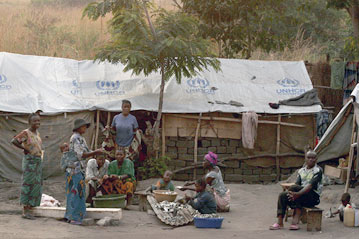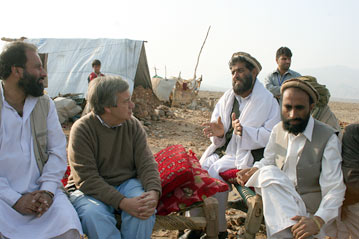Afghanistan 10 years after Soviet pull-out
Afghanistan 10 years after Soviet pull-out
A decade after the last Soviet soldier left Afghan soil, and 20 years after the first groups of Afghan refugees fled the Soviet invasion, more than 2.6 million Afghans still remain in exile.
The Afghans have remained the single largest refugee group in the world for 19 years in succession, although their continuing plight has, in recent years, been overshadowed by newer conflicts and refugee movements elsewhere in the world.
By the end of 1979 - the year the Soviet army entered Afghanistan in support of the communist regime which had seized power the previous year - there were already 400,000 refugees in Pakistan and 200,000 in Iran. By 15 February 1989, the number had risen to a staggering 6.2 million, split almost equally between the two neighbouring countries, which showed extraordinary generosity in hosting such a vast number of refugees on their territory, despite the burden they represented to their own societies, environment and infrastructure. In both Iran and Pakistan, the refugees were allowed to work, and received considerable government support in the education and health sectors.
Since the Soviet withdrawal, almost two thirds of the refugees have returned to their devastated and poverty-stricken country, despite the outbreak of a new war between different Afghan groups competing for power. In all, more than 4 million Afghans have returned home voluntarily since 1989 - another refugee record - and a remarkable testimony to their courage.
While it was the Soviet invasion and occupation of Afghanistan that caused the majority of the refugees to flee, it is subsequent events - almost uninterrupted fighting between constantly shifting alliances of Afghan political groups and militias, continued human rights abuses, and a shattered economy and infrastructure - that is preventing the final settlement of the Soviet legacy.
The strength of the refugees' desire to rebuild their lives in their home country was amply demonstrated in 1992, after the communist government, shorn of its superpower support, finally fell from power. During the course of that year, a total of 1.6 million refugees went home. In 1993, another million followed suit, even though by then the capital city, Kabul, was being torn apart by infighting between different Afghan factions.
By the late 1990s, the numbers returning to relatively safe parts of the country - of which there are plenty - were still adding up to around 100,000 a year. However, many of the remaining refugees are understandably reluctant to return under current circumstances.









